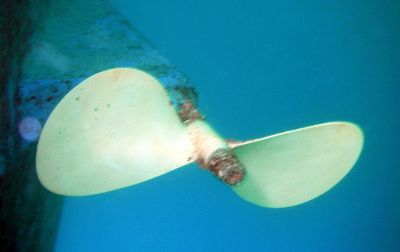Quieting the oceans

Festpropeller
By T.Friedrich (Photo) [GFDL (http://www.gnu.org/copyleft/fdl.html), CC-BY-SA-3.0 (http://creativecommons.org/licenses/by-sa/3.0/) or CC BY 2.5 (http://creativecommons.org/licenses/by/2.5)], via Wikimedia Commons
Researchers from multiple nations are joining forces to investigate and mitigate the effects of underwater noise generated by shipping.
Cavitation is a noisy, vibration-inducing phenomenon where water ʹcold-boils' at low pressure, causing shock waves when the cavitation bubbles collapse upon entering areas of higher pressure resulting in noise bursts. This underwater noise, created by ever-increasing maritime traffic, may negatively affect large sea mammals and fish.
The EU-funded 'Suppression of underwater noise induced by cavitation' (SONIC) project aims to understand, map and minimise background noise caused by shipping.
SONIC has brought together world-leading hydrodynamic institutes, noise experts, propeller designers, universities, European shipyards and marine biologists to develop guidelines for determining and mitigating the underwater noise emitted by shipping in the North Sea. SONIC has developed techniques to model cavitation noise computationally and experimentally on model scale. Full scale measurements on a dedicated test vessel as well as close to a busy shipping lane, have been done to validate the numerical and experimental techniques. Project members are also mapping the spatial distribution of sound caused by a single ship (a noise footprint) and sets of ships in an area (a noise map). Making use of AIS data and radiated noise models, noise maps are genereated.
At the completion of SONIC in 2015, the cavitation noise models will have been validated resulting in guidelines for determining and mitigating the underwater noise levels of ships. The European Commission can use the noise mapping methods to determine the underwater sound levels in European waters.
Quieting the oceans in this way will improve the environmental status of European waters and the welfare of marine life.
published: 2015-04-13

